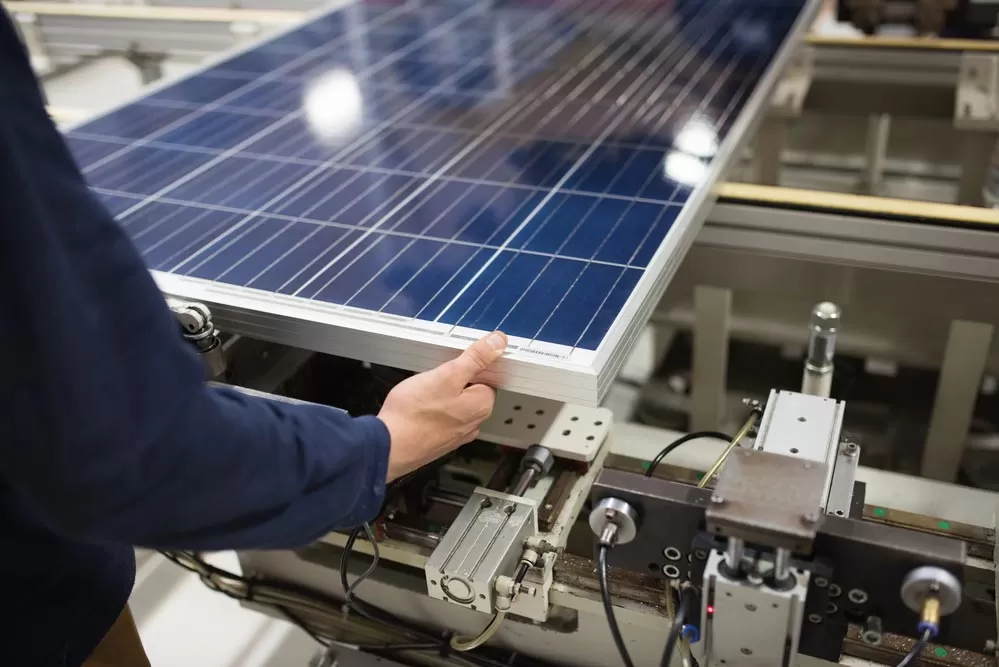You may have seen the word “efficiency” come up while you read about solar panels. While it may sound like a good thing, you might be wondering what it really means and how it’s measured. Solar panel efficiency measures the system’s ability to turn sunlight into energy that will power your home. Solar panels with a higher efficiency will be able to convert a larger percentage of sunlight into electricity. In other words, they will generate more kilowatt-hours per square foot than standard solar panels.

How Solar Panel Efficiency is Measured
Solar panels are made of module or photovoltaic (PV) cells. You can measure the efficiency of each cell according to the percentage of light energy it converts into electricity. So, the efficiency of each solar cell is measured according to its ability to capture energy from light particles (which are called “photons”). When light hits the solar panels, they release electrons that start moving and create an electrical current.
If a solar panel has a 20% efficiency, it can convert 20% of sunlight into usable energy. Most solar panels on the market have an efficiency of less than 20% (with an average range of 15-20%). These numbers may seem low, but you should remember that solar cells use free energy input with zero emissions. Power plants that use fossil fuels can operate at an efficiency level of approximately 60%, but the energy input isn’t free and generates continuous emissions.
The Difference Between Module Efficiency and System Efficiency
The efficiency of each solar panel isn’t the same as the overall efficiency of an installed solar system because like any other electrical system, some of the generated energy gets lost in the wiring. Solar systems also rely on inverters to convert the direct current (DC) from the PV cells into the alternating current (AC) that’s needed to power your home and its appliances. The best solar inverters can operate at 97% efficiency, but you can expect to see minor losses during transmission. Because of wiring and conversion losses, the efficiency of each solar panel will always be higher than the efficiency of the entire system.
Common Misconceptions About Solar Panel Efficiency
There’s a common misconception people have about the efficiency of solar panels — that it has a direct correlation to product quality. But it’s just a product feature that’s similar to power rating and module dimensions. You can find high-quality solar panels at all types of efficiency levels. The primary factor that determines solar panel efficiency is the material in which it was built. Monocrystalline solar panels usually have an efficiency of over 20%, while polycrystalline panels usually operate at an efficiency of less than 20%. Thin film panels are considered to be the least efficient, but new materials (such as perovskite) can match the efficiency of silicon cells.
The Advantages of High-Efficiency Solar Panels
While high-efficiency solar panels are more expensive, they have a number of advantages. The energy savings from going solar will make up for the higher upfront cost. Here are some of the benefits of high-efficiency solar panels:
- More effective use of your space — Because high-efficiency solar panels can convert more sunlight into energy, you’ll be able to use your roof space more effectively.
- Higher energy savings — Monocrystalline solar panels have a higher efficiency and wattage than polycrystalline panels of the same size. So if you have enough roof space for 20 panels, you can achieve a total system wattage of 6 kilowatts (kW) with polycrystalline panels. But you can generate 7.4 kW with monocrystalline panels.
- Less impact from higher temperatures — All solar panels will experience a small loss in wattage as their temperature rises. While they will recover from the lost productivity once they cool down, constant exposure to hot weather can cause a loss of production that will add up over time. Solar panels will usually experience a 10-25% decrease in solar panel efficiency during hot weather, but monocrystalline solar panels will only experience an 8% loss in productivity with a temperature increase of 20 degrees Celsius.
- Higher solar incentives — A lot of solar benefit programs calculate financial incentives according to a system’s per-watt capacity. Because high-efficiency panels can generate more wattage, they can qualify for higher incentive amounts. This rule does not, however, apply to incentive programs with fixed rebates.
If you’re looking for one of the best places to get high-efficiency solar panels in Corpus Christi, be sure to reach out to Solar Power Integrator. We would be happy to speak with you about your specific needs.
